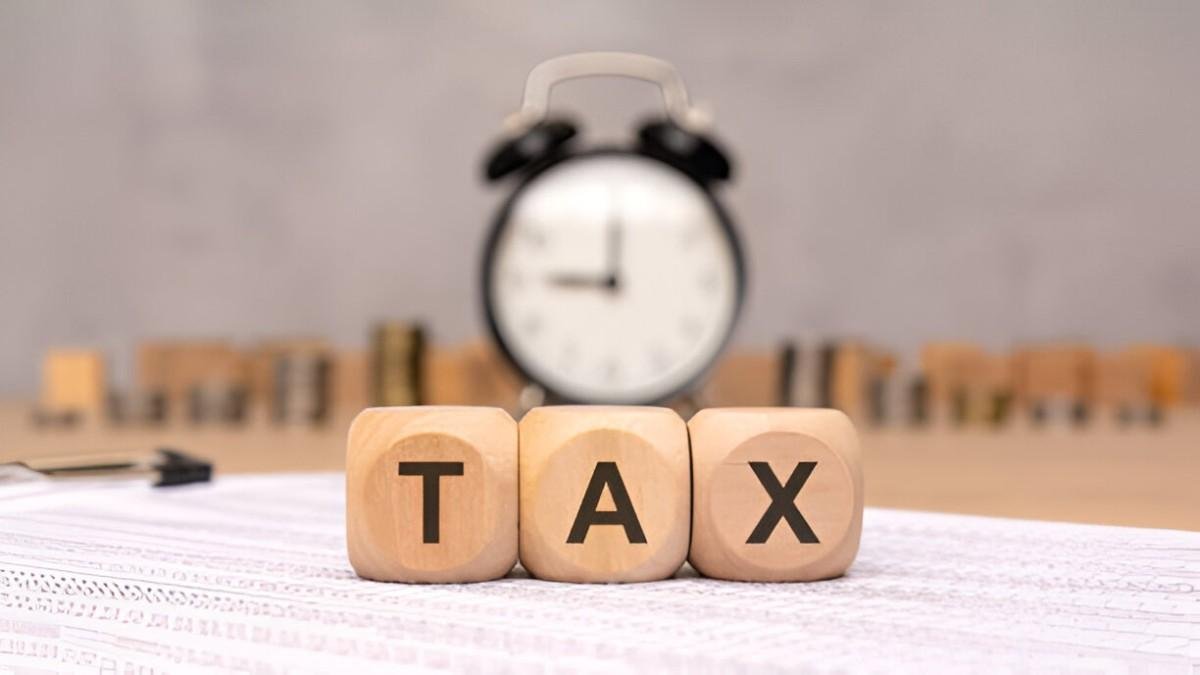Taxation is a cornerstone of any modern economy, and understanding its nuances is critical for anyone navigating the financial world. One of the most straightforward yet often misunderstood systems is proportional taxation. In this article, I will break down proportional taxation, explore its implications, and provide practical examples to help you grasp its mechanics. Whether you’re a student, a professional, or simply someone curious about finance, this guide will equip you with the knowledge to understand proportional taxation in depth.
Table of Contents
What Is Proportional Taxation?
Proportional taxation, also known as a flat tax, is a system where everyone pays the same percentage of their income, regardless of how much they earn. Unlike progressive taxation, where tax rates increase with income, or regressive taxation, where lower-income individuals pay a higher percentage of their income, proportional taxation applies a uniform rate across the board.
For example, if the flat tax rate is 15%, someone earning $50,000 would pay $7,500 in taxes, while someone earning $200,000 would pay $30,000. The rate remains constant, but the actual tax amount varies with income.
The Mathematical Foundation
The formula for proportional taxation is straightforward:
Tax = Income \times Tax RateWhere:
- Tax is the amount paid to the government.
- Income is the individual’s total taxable income.
- Tax Rate is the flat percentage applied to all income levels.
For instance, if the tax rate is 20% and your income is $100,000, your tax liability would be:
Tax = 100,000 \times 0.20 = 20,000This simplicity is one of the key advantages of proportional taxation. It eliminates the complexity of multiple tax brackets and reduces administrative overhead.
Historical Context of Proportional Taxation
Proportional taxation is not a new concept. It has roots in ancient civilizations, where flat rates were often applied to property or agricultural output. In the United States, the idea of a flat tax has been debated for decades. Proponents argue that it promotes fairness and efficiency, while critics claim it disproportionately benefits higher-income individuals.
During the 1980s and 1990s, several U.S. politicians proposed flat tax systems as a way to simplify the tax code. While none of these proposals were enacted at the federal level, some states, such as Pennsylvania and Illinois, have implemented flat income tax rates.
Advantages of Proportional Taxation
Simplicity and Transparency
One of the most significant advantages of proportional taxation is its simplicity. With a single tax rate, individuals and businesses can easily calculate their tax liabilities without navigating complex tax brackets or deductions. This transparency reduces compliance costs and minimizes errors in tax filings.
Encourages Economic Growth
Proponents of proportional taxation argue that it incentivizes productivity and investment. Since everyone pays the same rate, individuals are not penalized for earning more. This can lead to increased economic activity, as people are motivated to work harder and invest in their futures.
Reduces Tax Evasion
A simpler tax system can also reduce tax evasion. When tax laws are complex, individuals and businesses may exploit loopholes to minimize their liabilities. A flat tax system eliminates many of these loopholes, making it harder to evade taxes.
Disadvantages of Proportional Taxation
Perceived Unfairness
Critics of proportional taxation argue that it is inherently unfair. Since everyone pays the same percentage, lower-income individuals may feel the burden more acutely. For example, a 15% tax on $30,000 leaves a person with $25,500, while the same rate on $300,000 leaves $255,000. The disparity in disposable income can exacerbate income inequality.
Impact on Government Revenue
A flat tax system may also reduce government revenue, depending on the rate chosen. If the rate is set too low, it may not generate enough funds to support public services. Conversely, if the rate is set too high, it could discourage economic activity.
Lack of Progressivity
Proportional taxation lacks the progressivity of a tiered system. Progressive taxation is designed to redistribute wealth by taxing higher incomes at higher rates. Without this mechanism, proportional taxation may fail to address socioeconomic disparities.
Proportional Taxation in Practice: A U.S. Perspective
While the U.S. federal income tax system is progressive, some states have adopted proportional taxation. For example, Pennsylvania imposes a flat income tax rate of 3.07%. This means that regardless of whether you earn $30,000 or $300,000, you pay the same percentage of your income in state taxes.
Example: Calculating State Taxes in Pennsylvania
Let’s consider two individuals living in Pennsylvania:
- Person A earns $40,000 annually.
- Person B earns $150,000 annually.
Using the flat tax rate of 3.07%, their tax liabilities would be:
Tax_A = 40,000 \times 0.0307 = 1,228 Tax_B = 150,000 \times 0.0307 = 4,605While Person B pays more in absolute terms, both individuals contribute the same proportion of their income to state taxes.
Comparing Proportional, Progressive, and Regressive Taxation
To better understand proportional taxation, it’s helpful to compare it with other systems. Below is a table summarizing the key differences:
| Tax System | Description | Example |
|---|---|---|
| Proportional | Same tax rate for all income levels. | 15% tax on $50,000 and $200,000. |
| Progressive | Tax rate increases with income. | 10% on $50,000, 20% on $200,000. |
| Regressive | Lower-income individuals pay a higher percentage of their income. | Sales tax: A $1,000 purchase costs more for low-income earners. |
Visualizing the Differences
Let’s visualize the impact of each system using hypothetical tax rates and incomes:
| Income | Proportional Tax (15%) | Progressive Tax | Regressive Tax |
|---|---|---|---|
| $30,000 | $4,500 | $3,000 | $5,000 |
| $100,000 | $15,000 | $20,000 | $12,000 |
| $500,000 | $75,000 | $150,000 | $50,000 |
This table illustrates how each system distributes the tax burden across different income levels.
The Role of Deductions and Exemptions
In practice, even proportional tax systems may include deductions or exemptions to alleviate the burden on lower-income individuals. For example, a flat tax system might allow a standard deduction of $10,000. This means that only income above $10,000 would be subject to the flat rate.
Example: Incorporating Deductions
Let’s revisit Person A and Person B in Pennsylvania, but this time with a $10,000 standard deduction:
- Person A earns $40,000. After the deduction, taxable income is $30,000.
Person B earns $150,000. After the deduction, taxable income is $140,000.
Tax_B = 140,000 \times 0.0307 = 4,298The inclusion of deductions makes the system slightly more progressive, as lower-income individuals benefit more from the exemption.
Proportional Taxation and Economic Behavior
One of the most debated aspects of proportional taxation is its impact on economic behavior. Let’s explore this from two angles: labor supply and savings.
Labor Supply
A flat tax system can influence how much people choose to work. Since the tax rate remains constant, individuals may be more willing to work additional hours or take on higher-paying jobs. This contrasts with progressive systems, where higher earnings could push individuals into higher tax brackets, reducing the incentive to earn more.
Savings and Investment
Proportional taxation can also encourage savings and investment. With a flat tax rate, the returns on investments are taxed at the same rate as earned income. This consistency can make financial planning easier and more predictable, fostering a climate conducive to investment.
Criticisms and Counterarguments
While proportional taxation has its merits, it is not without criticism. One common critique is that it fails to account for the diminishing marginal utility of money. In simpler terms, $1,000 means more to someone earning $30,000 than to someone earning $300,000. A flat tax system does not address this disparity, potentially exacerbating income inequality.
Addressing Inequality
To mitigate this issue, some proponents suggest combining proportional taxation with targeted social programs. For example, revenue generated from a flat tax could be used to fund education, healthcare, and other services that benefit lower-income individuals. This hybrid approach aims to balance efficiency with equity.
Proportional Taxation in a Global Context
The U.S. is not alone in exploring proportional taxation. Several countries, including Estonia, Latvia, and Lithuania, have implemented flat tax systems with varying degrees of success. These nations have experienced economic growth and increased tax compliance, but they also face challenges related to income inequality and public service funding.
Case Study: Estonia
Estonia adopted a flat tax system in 1994, with a rate of 26%. Over time, the rate has been reduced to 20%. The system has been praised for its simplicity and effectiveness in attracting foreign investment. However, critics argue that it has not done enough to address income disparities.
The Future of Proportional Taxation in the U.S.
The debate over proportional taxation is far from settled. As the U.S. grapples with issues like income inequality, tax reform, and economic growth, the flat tax system will likely remain a topic of discussion. While it offers simplicity and efficiency, its potential impact on fairness and revenue generation cannot be ignored.
Potential Reforms
If the U.S. were to adopt a federal flat tax system, it would need to address several key issues:
- Setting the Rate: The rate must be high enough to generate sufficient revenue but low enough to avoid discouraging economic activity.
- Incorporating Deductions: Standard deductions or exemptions could help alleviate the burden on lower-income individuals.
- Ensuring Equity: Policymakers would need to balance efficiency with measures to address income inequality.
Conclusion
Proportional taxation is a fascinating and often polarizing topic. Its simplicity and transparency make it an attractive option for those seeking to streamline the tax system. However, its potential impact on fairness and government revenue cannot be overlooked. As I’ve explored in this article, proportional taxation has both advantages and disadvantages, and its suitability depends on the specific economic and social context.





